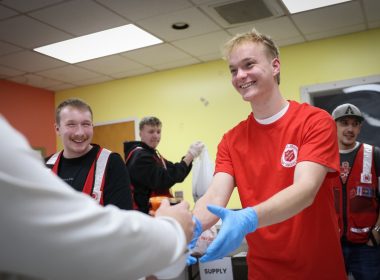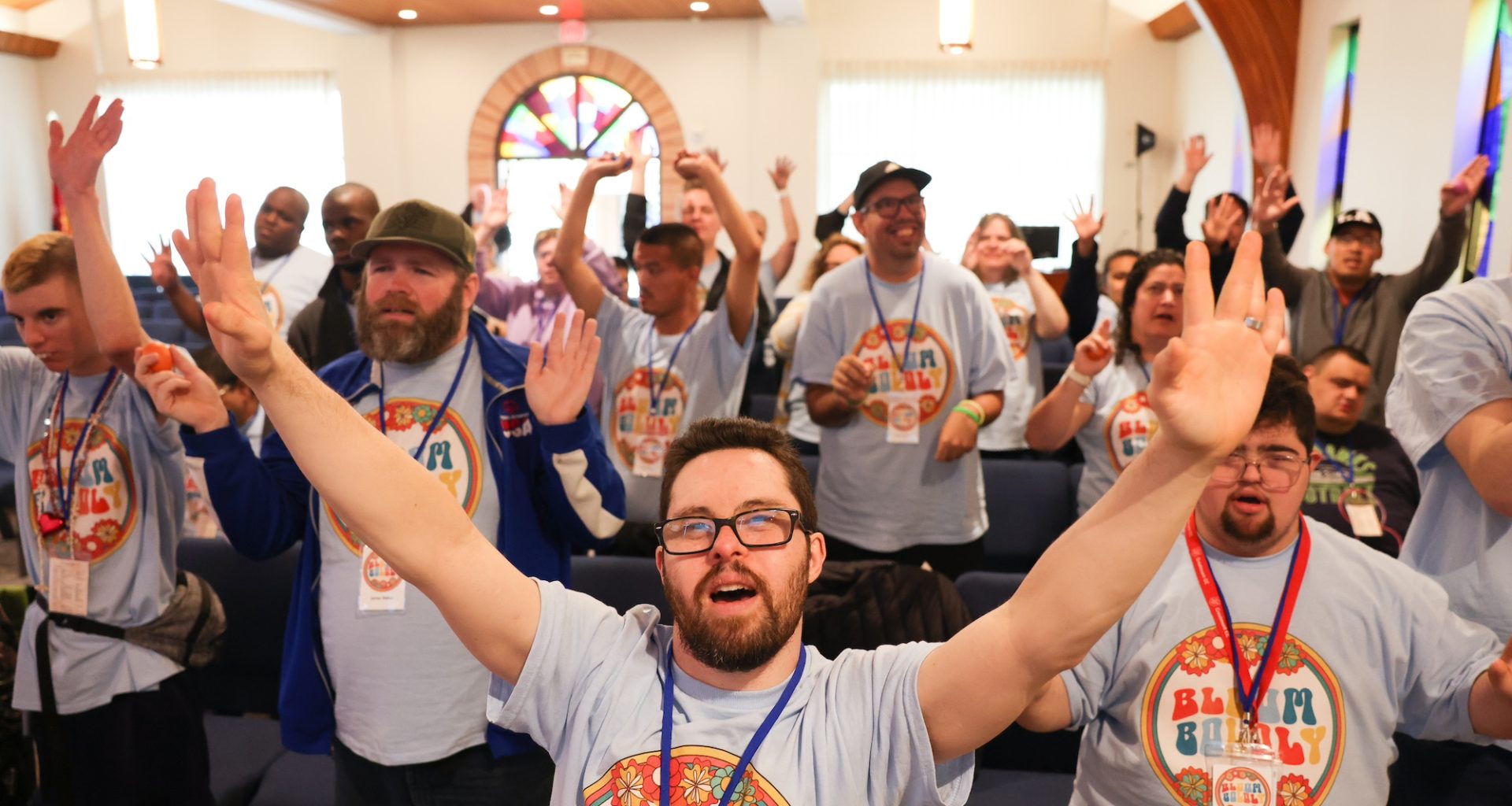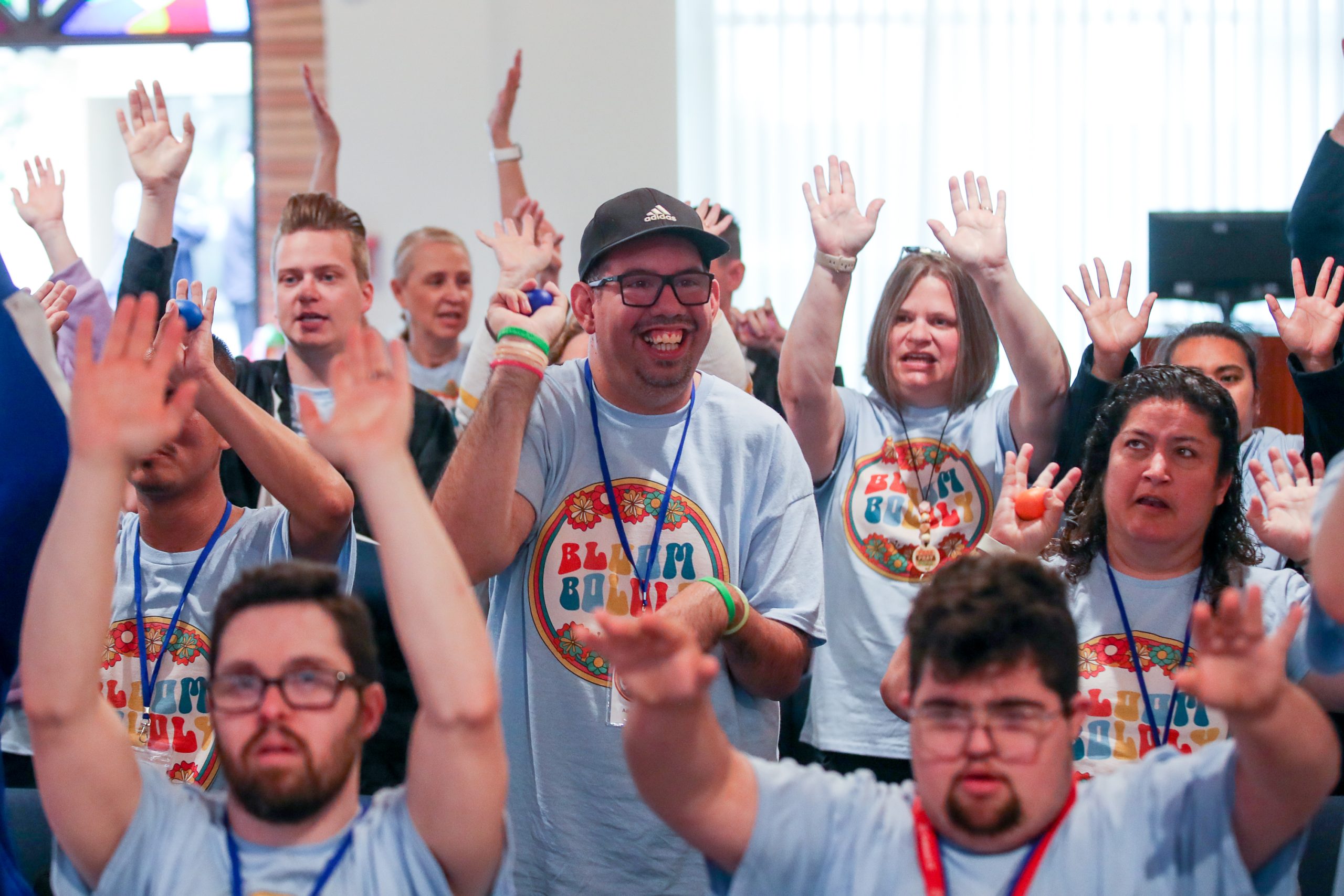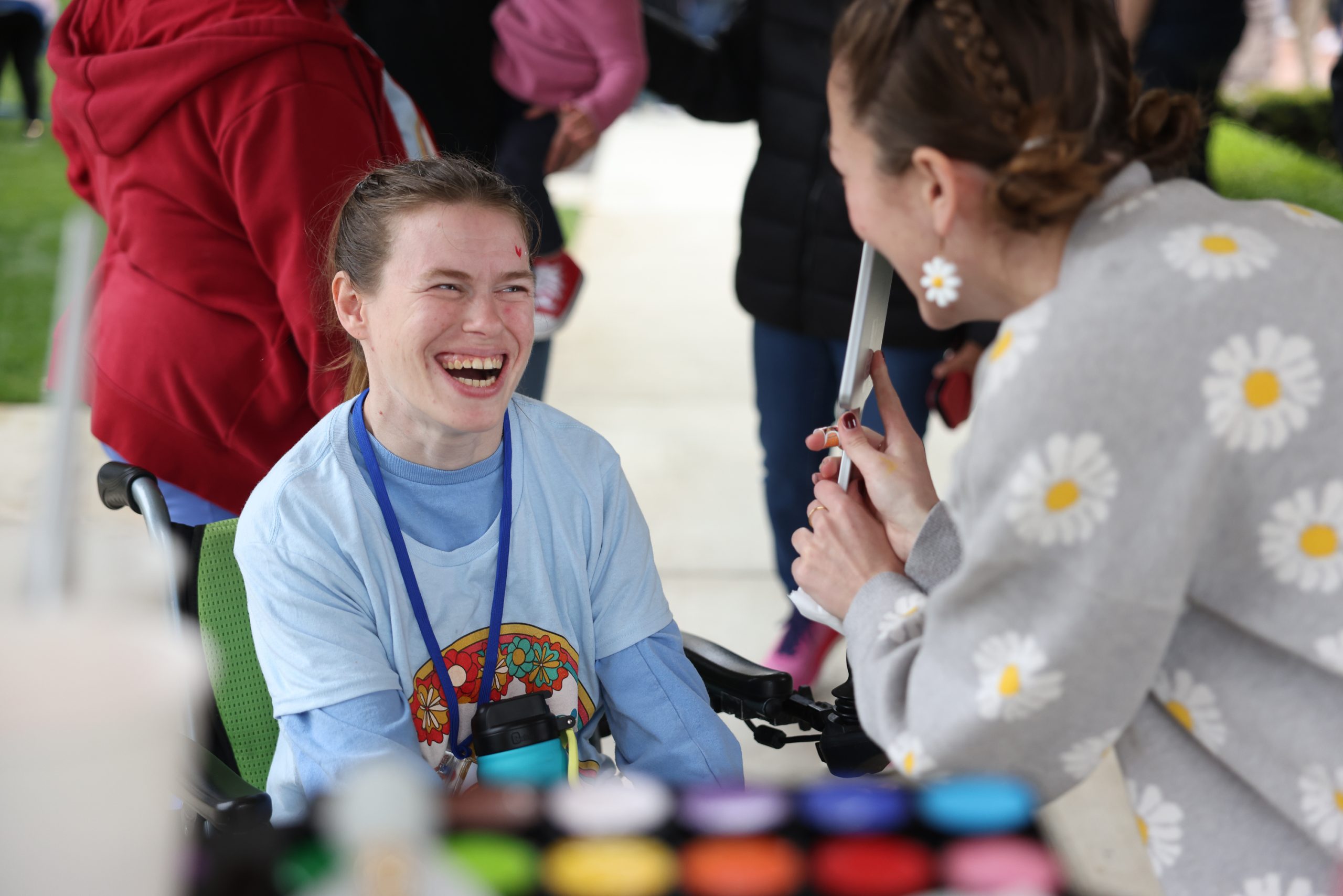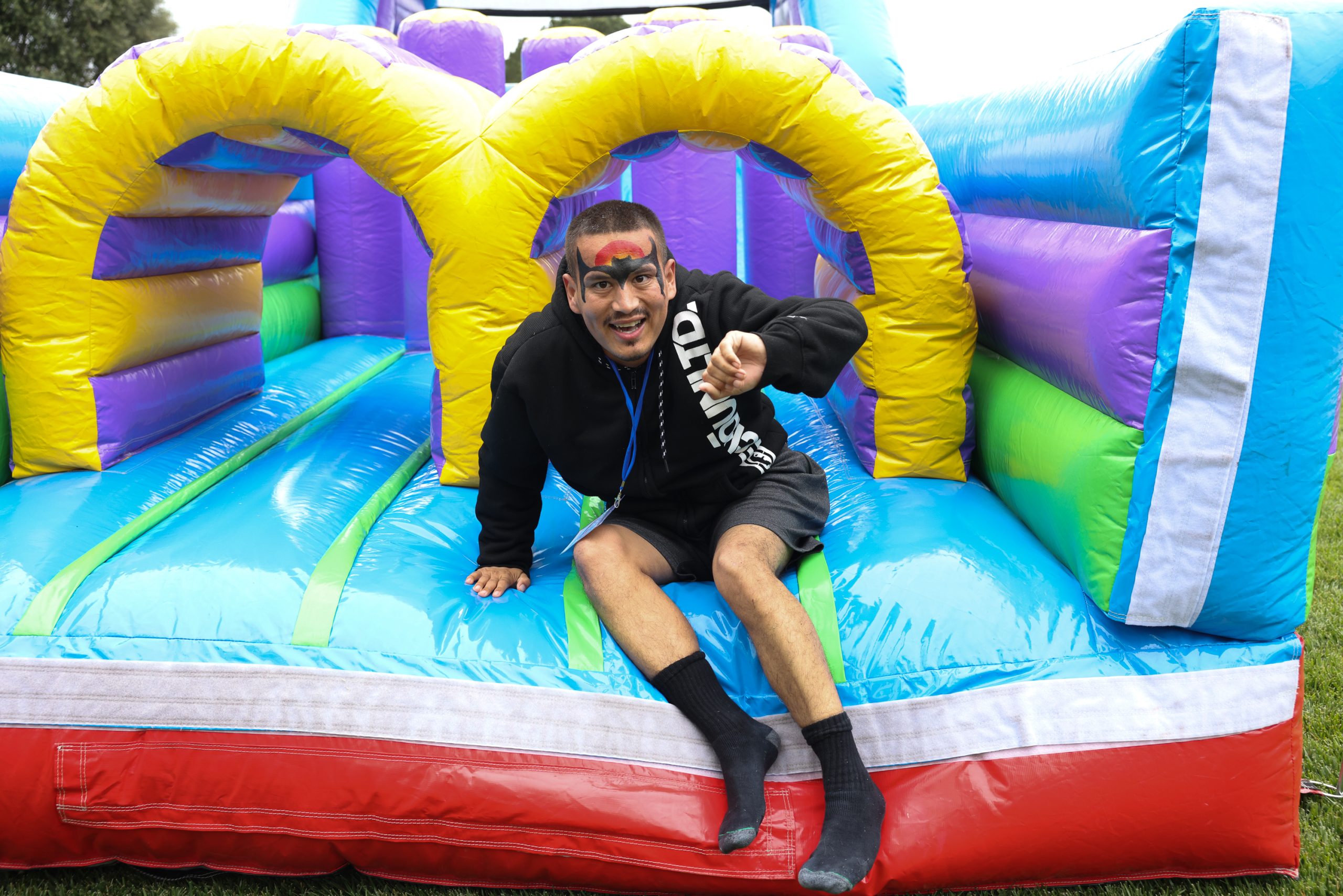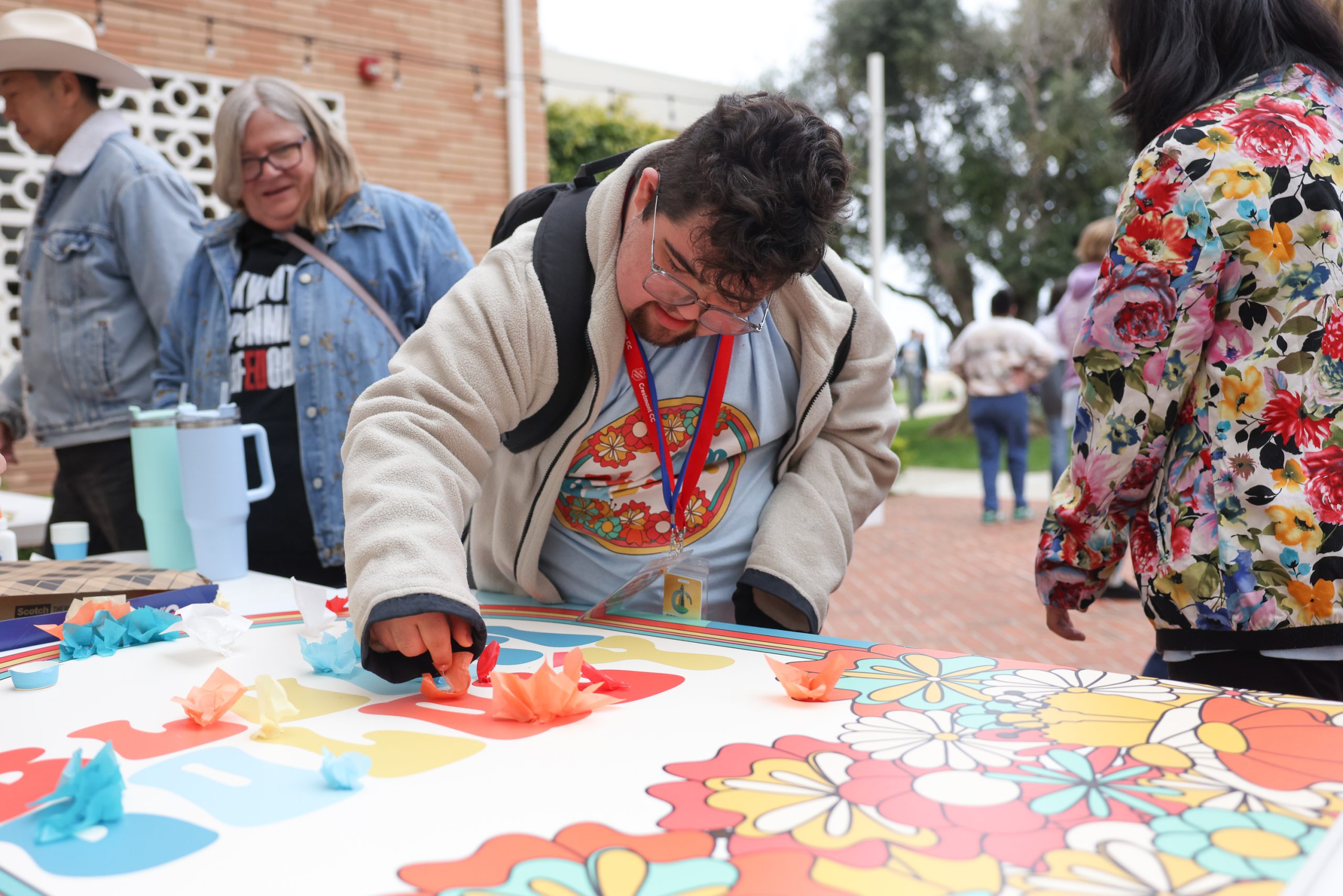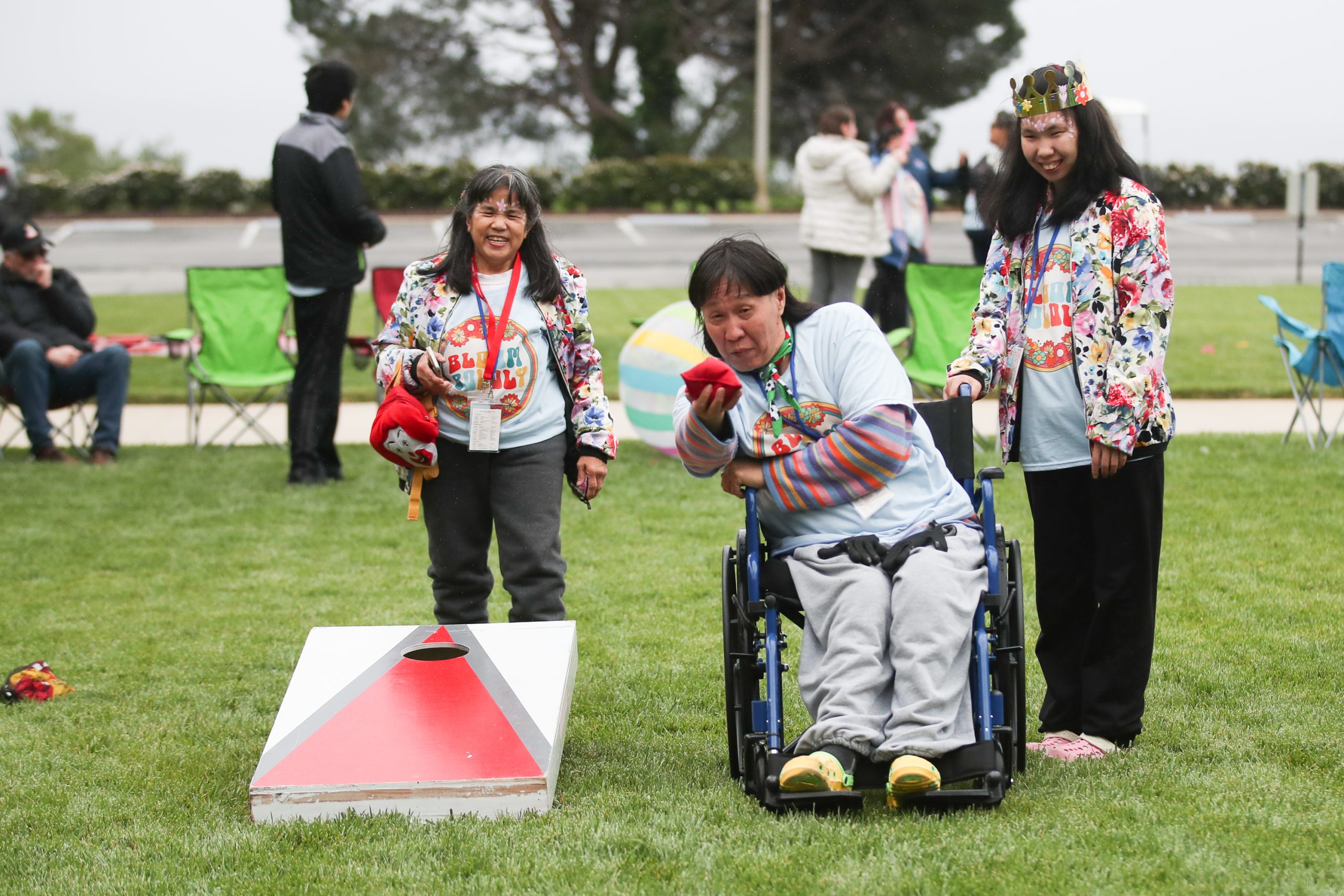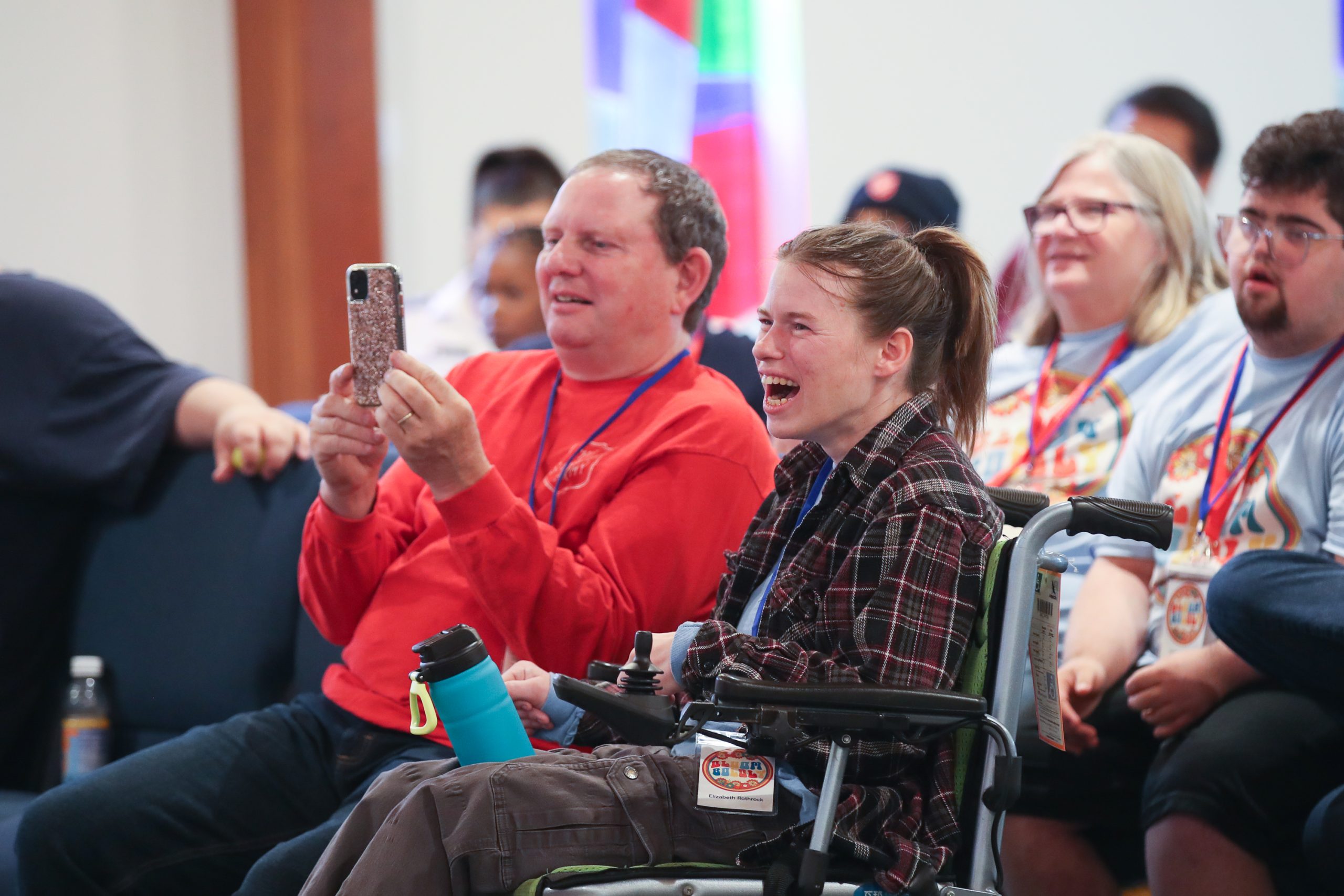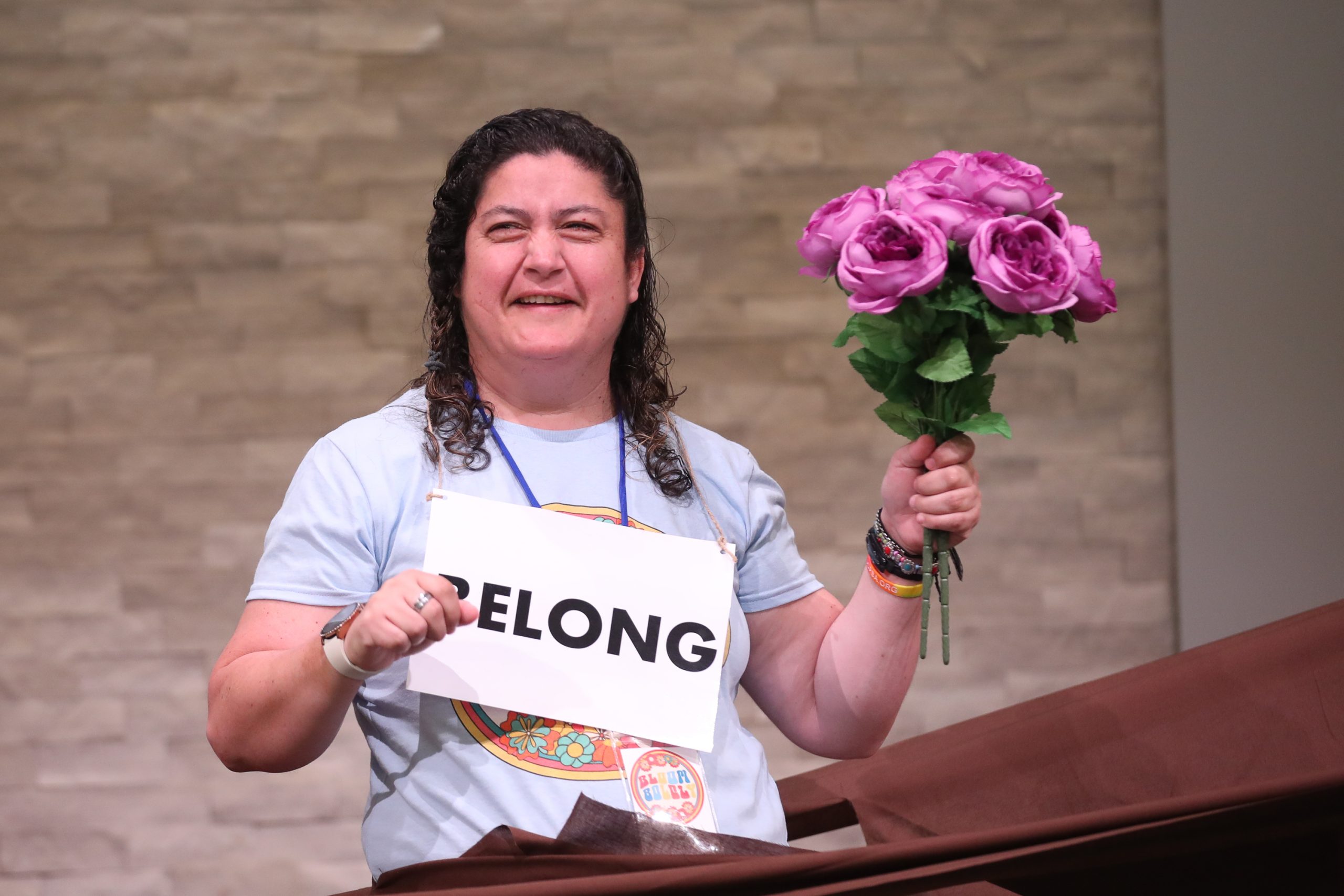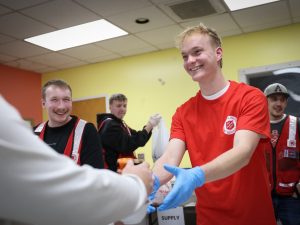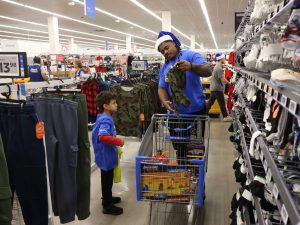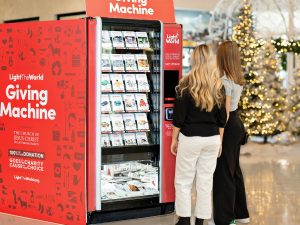Inside the chapel on the Crestmont Campus in Rancho Palos Verdes, California, colorful ribbons were waving, beach balls were flying and Jon Psaute was on stage signing “Friend of God” in American Sign Language as part of the worship band for The Salvation Army Western Territory’s second Adaptive Retreat.
Last year, Psaute spontaneously joined the band in this capacity. This year, Director of Disabilities and Ministries Major Nancy Helms invited him back as an official part of the band.
“God does major things around here,” he said.
This year, the Adaptive Retreat, held April 12-14, invited attendees to “Bloom Boldly,” creating space for worship and joy.
Helms said the weekend is a glimpse of seeing the kingdom of God the way she thinks God intended us to experience it, as members of the disability community represent an estimated 16 percent of the world’s population, according to the World Health Organization, making them the largest marginalized group. A group that is often, unfortunately, not included in the church, too.
“This is a more full picture,” she said. “That excites me, because I think we all benefit from that—giving seats of honor to the people Jesus told us to, and I think God’s honoring it. It’s just a beautiful picture of what the body of Christ should look like. We’re missing a lot of parts. When you come to events like this, the body’s way more complete.”
“The best part is seeing the growth, and then the connection—the pieces of finding your people.”
Gerriann Armstrong
This year 27 delegates came from around the West, and as far as Brooklyn, New York, and Canada. Major Pamela Maynor, Director of Mission and Ministry Training at the College for Officer Training in the Eastern Territory, was the guest speaker for the weekend.
“I think this community is so often not included in church services, not out of a want to exclude, but out of an ignorance of knowing how to include,” Maynor said. “The fact that there is something being birthed as beautiful as this that will just not only embrace this community, but in a way, welcome us into their community to learn from them…This is a taste of heaven.”
Over three sessions, Maynor spoke about being fearfully and wonderfully made, blooming with the body of Christ and sharing your beauty.
“Worship was so free,” she said. “There were no judgments, there were no thoughts of immaterial little things that typically would be on your mind…It’s just worship. The priority is the priority. It’s been such a gift, such a blessing.”
In addition to the main sessions, attendees participated in activities, like choir, karaoke and movie nights and shared meals.
At Saturday’s Field Day, there were opportunities for delegates and their caregivers to have fun and give back. Harrison Armstrong’s favorite part?
“Helping the people in the shelters out with giving them socks and some water,” he said from the blessing bag station. The bags will be distributed through the Stillman Sawyer Center in Harbor City, California.
Next to the blessing bag station were areas to decorate cookies and paint rocks. In the lawn, areas dedicated to bubbles, yard games, inflatable play and face painting brought smiles.
Heather Rew, from Yakima, Washington, chose to have a purple butterfly painted on her wrist. For Rew, the trip to the retreat marked her first time on an airplane, and in California. Her thoughts on the retreat? “I love it,” she said.
Throughout the weekend care was given to create spaces to accommodate a range of needs for the delegates, like adding ear plugs to the back of the chapel and creating a lower-stimulation area in the Terrace Room where meals were served. Additionally, time was dedicated for caregivers to connect.
Every caregiver’s experience is different, said Gerriann Armstrong, noting she’s attended the retreat with her son both years.
“The best part is seeing the growth, and then the connection—the pieces of finding your people…People who understand about the things that we cry about in public or in private about, hopes and dreams and the changes of those things,” she said. “It’s a new group of people that you’re able to connect with and are like, ‘OK, I’m not the only one.’”
Armstrong said it’s time to consider what’s next. With many delegates having aged or are aging out of activities designed for those under 18, what exists for them?
“There’s this group of 18 to 35 year olds that we need to be looking at,” she said. “Where do they fit within our corps? Where do they fit within our organization, within our churches? What can we do to make sure that they have meaning for the things that they’re doing? And that we’re promoting that inclusivity in our community?”
Helms said many people have misconceptions about having a disability ministry.
“We think a disability ministry is this hard, impossible thing. But as you can see from this, it’s simple. It’s not simple in a simplistic way, but it’s not hard to do.
“Even though there’s people here with probably 20 different disabilities, everybody has a place at the table,” Helms said. “It’s not hard, and they all worship in their own way, and it’s beautiful. And I like that—we’re so perfect about our worship and make it sterile, and they get up there and wave their ribbons, which I think is what God wants.”
Do Good:
- What cause best fits your personality? Take our quiz and discover where you can make the biggest impact for good today.

